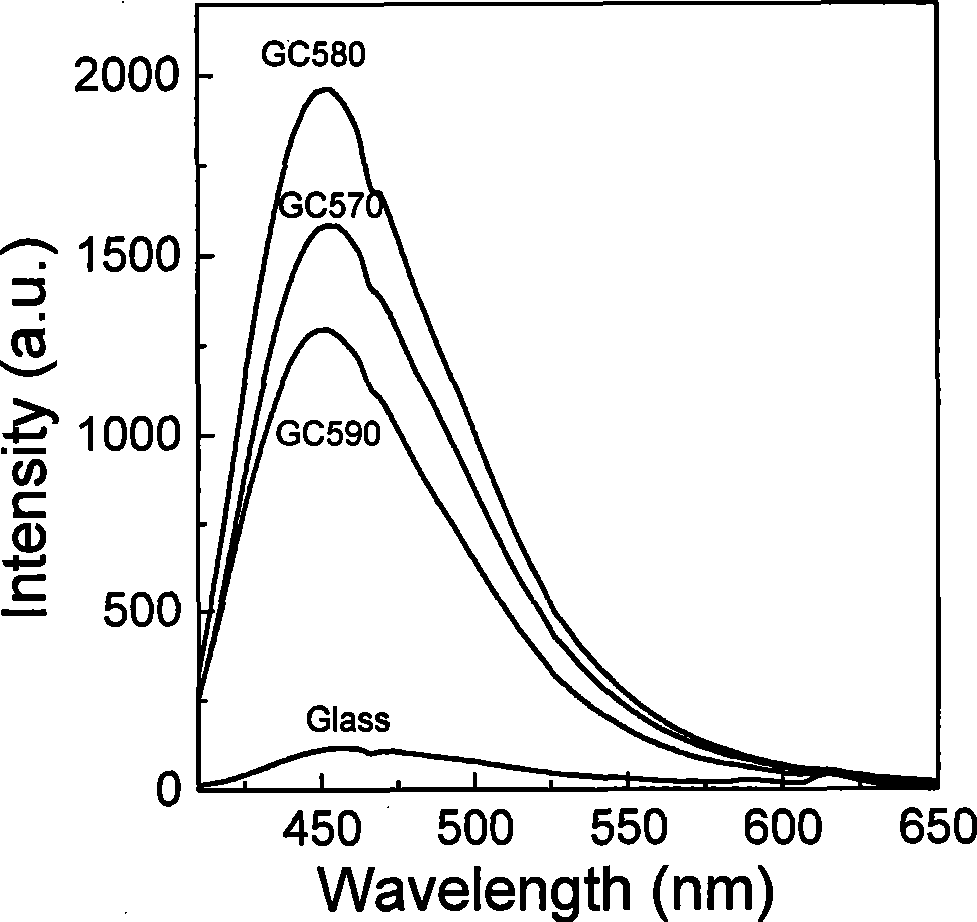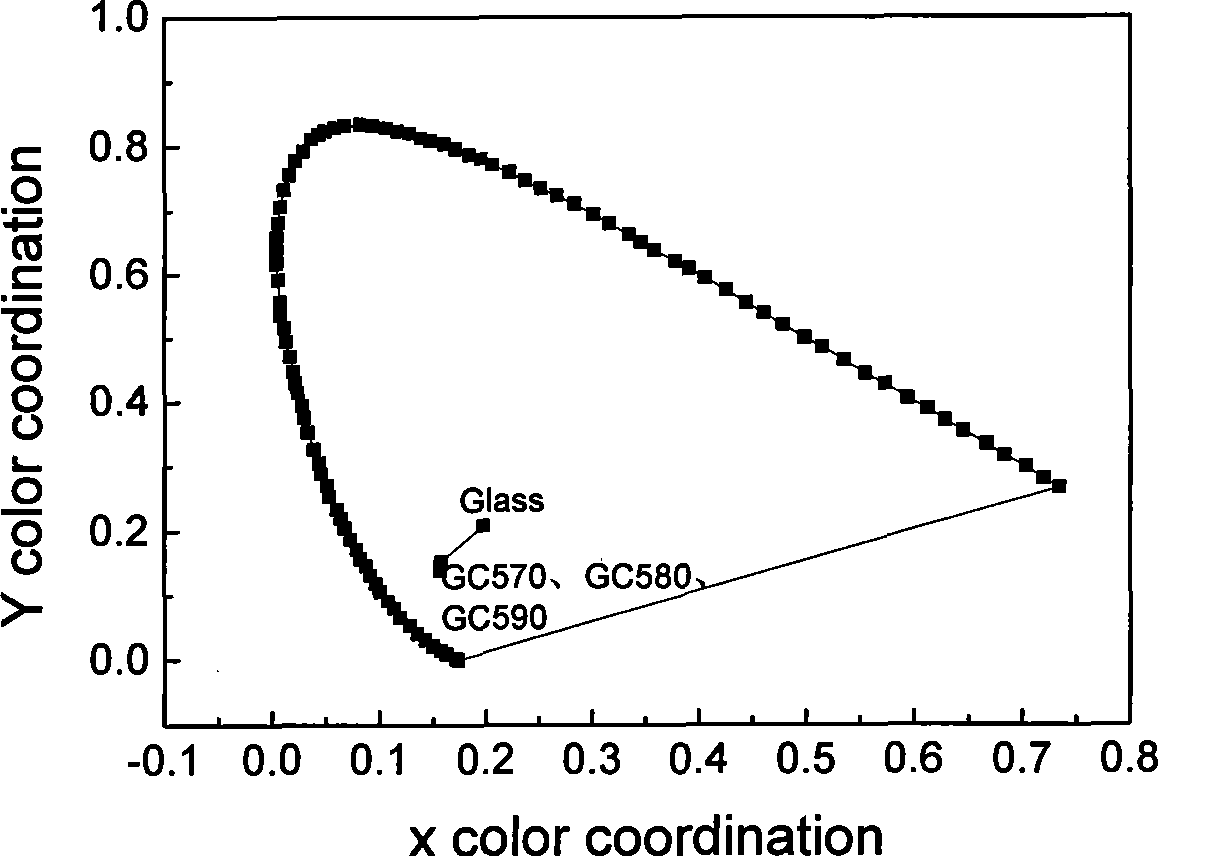Near ultraviolet excitated blue luminescent glass ceramic and preparation thereof
A luminescent glass and near-ultraviolet technology, which is applied in the field of near-ultraviolet excited blue luminescent glass ceramics and the preparation thereof, can solve the problems of single preparation method and poor matching of emission spectra, and achieves simple preparation process, low cost and high cost. Effect of Luminescence Stability
- Summary
- Abstract
- Description
- Claims
- Application Information
AI Technical Summary
Benefits of technology
Problems solved by technology
Method used
Image
Examples
Embodiment 1
[0031] By composition 50SiO 2 -20Al 2 o 3 -20BaF 2 -7NaF-3EuF 3 Weigh SiO 2 , Al 2 o 3 , BaF 2 , NaF and EuF 3 , and the above raw materials are fully mixed, put them into a corundum crucible, and put them into a melting furnace that has been heated to 1350°C in a reducing atmosphere (the reducing atmosphere is generated by a graphite crucible and graphite powder), and the melting material is kept at a constant temperature of 1350°C for 50 minutes Finally, the crucible was quickly taken out from the high-temperature furnace, and the melt in the crucible was quickly poured into a copper mold to obtain a glass sample. According to the DTA curve of the glass, the glass was heat-treated for 2 hours at 570°C, 580°C, and 590°C between the first crystallization peak temperature and the glass transition temperature to obtain glass ceramics. XRD analysis shows that BaF is distributed in the glass ceramics 2 nanocrystalline phase.
[0032] The excitation spectrum of the glass...
Embodiment 2
[0034] By composition 50SiO 2 -20Al 2 o 3 -20BaF 2 -9NaF-1EuF 3 Weigh SiO 2 , Al 2 o 3 , BaF 2 , NaF and EuF 3 , and mix the above raw materials well, put them into a corundum crucible, put them into a reducing atmosphere furnace that has been heated to 1350°C, and melt the raw materials into a liquid state. Crucible, the molten material in the crucible is quickly poured into a copper mold to obtain glass. The obtained glass was subjected to differential thermal analysis, and the first crystallization peak temperature was obtained to be 650° C., and the glass was heat-treated at 630° C. for 2 hours to obtain glass ceramics. XRD analysis showed that BaF was precipitated in the glass-ceramic 2 Nanocrystalline phase, the glass-ceramic emits bright blue light when excited by near-ultraviolet light.
Embodiment 3
[0036] By composition 50SiO 2 -10Al 2 o 3 -30BaF 2 -7NaF-3EuF 3 Weigh SiO 2 , Al 2 o 3 , BaF 2 , NaF, and EuF 3 , and mix the above-mentioned raw materials well, put them into a corundum crucible, and put them into a reducing atmosphere furnace that has been heated to 1300°C to melt the raw materials into a liquid state. Crucible, the molten material in the crucible is quickly poured into a copper mold to obtain glass. According to the DTA curve of the glass, the first crystallization peak temperature is 600° C., and the glass is heat-treated at 600° C. for 2 hours to obtain glass ceramics. XRD analysis showed that BaF was precipitated in the glass-ceramic 2 nanocrystalline phase. Excitation spectrum and emission spectrum are close to Example 1.
PUM
 Login to View More
Login to View More Abstract
Description
Claims
Application Information
 Login to View More
Login to View More - R&D
- Intellectual Property
- Life Sciences
- Materials
- Tech Scout
- Unparalleled Data Quality
- Higher Quality Content
- 60% Fewer Hallucinations
Browse by: Latest US Patents, China's latest patents, Technical Efficacy Thesaurus, Application Domain, Technology Topic, Popular Technical Reports.
© 2025 PatSnap. All rights reserved.Legal|Privacy policy|Modern Slavery Act Transparency Statement|Sitemap|About US| Contact US: help@patsnap.com



